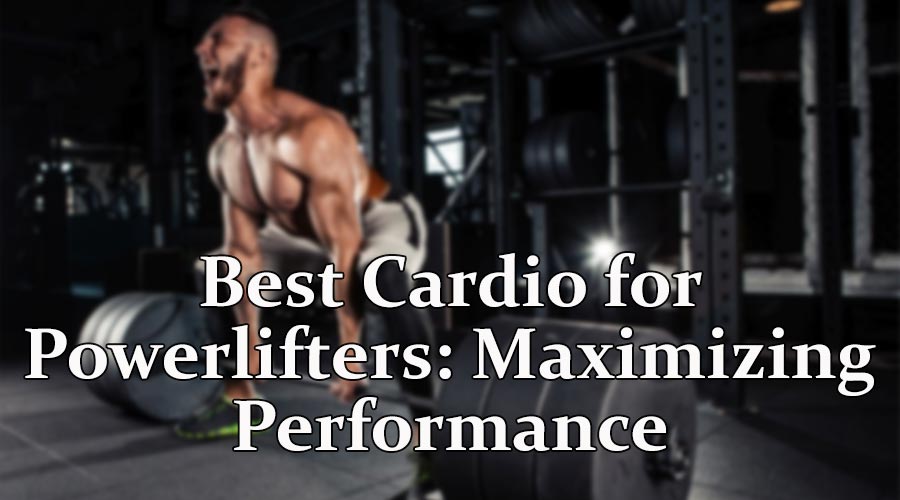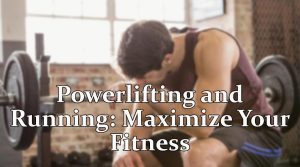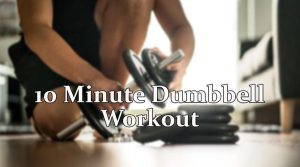For a powerlifter, the thought of incorporating cardio into their training regimen can seem like a foreign concept. After all, powerlifting is an exercise that focuses on strength and muscle gains through lifting heavy weights, so why bother with cardio? However, adding regular cardio to one’s workout routine can be beneficial for powerlifters in several ways.
Cardio can help improve physical performance by increasing endurance and cardiovascular health. It makes sense that if you are able to increase your stamina and breathing capacity during intense workouts, you will be able to lift heavier weights without tiring as easily. In addition to improved physical performance, including cardio in your workouts can help reduce joint pain after heavy lifting sessions. This is because the increased blood flow helps reduce inflammation in the joints so that the muscles and ligaments remain strong and healthy.
Contents
Powerlifting vs. Cardio

Powerlifting and cardio are two very different forms of exercise. Powerlifting involves heavy loads and incredibly challenging reps, while cardio is usually more focused on getting the heart rate up and staying active for a set period of time. Each type of exercise has its own advantages, so it’s important to think about which one is right for you before you start working out.
When it comes to powerlifting, this form of exercise is great for building strength quickly and efficiently. It requires a lot of concentration as well as grit in order to be successful at it. Because powerlifting uses heavier weights than what a person may normally lift during ordinary workouts, it can increase muscle mass over time if done correctly. In addition, powerlifting can also help improve physical performance in other areas such as running or playing sports since the exercises require coordination and strength simultaneously.
Reasons to Incorporate Cardio
Incorporating cardio into a powerlifting routine can have significant benefits for overall health and fitness. Cardio not only helps to build strength but also helps athletes build endurance, improve heart health, and lose body fat while maintaining muscle. There are several reasons why powerlifters should include some form of cardiovascular activity in their training regime.
Cardiovascular activities help to increase lung capacity and oxygen intake which is essential for any athlete who needs to keep up with a high-intensity workout. It also allows them to work longer at the same intensity level because they are not as easily exhausted by fatigue induced by lactic acid buildup in the muscles. In addition, aerobic exercise has been shown to improve metabolic rate and thermogenesis, which can be beneficial in burning calories during rest periods between sets.
Cardio Benefits: Why Cardio for Powerlifters?
Cardio is often seen as a form of exercise that runs counter to the goals of powerlifters. The idea of spending hours on a treadmill or jogging in circles seems antithetical to the goal of lifting heavy weights and building muscle mass. However, incorporating cardio into a powerlifting routine has many potential benefits that should not be ignored.
First, cardio can help build endurance and increase the amount of time powerlifters can continue their workouts before becoming exhausted or injured. This increased stamina can lead to higher-quality weight training sessions as well as a lower overall risk for injury due to fatigue. Additionally, cardiovascular activity has been shown to improve circulation which helps fuel muscles with oxygen-rich blood necessary for optimal performance during each set and rep. Finally, cardio workouts are often used by experienced powerlifters who have reached an advanced level in their training.
Types of Cardio
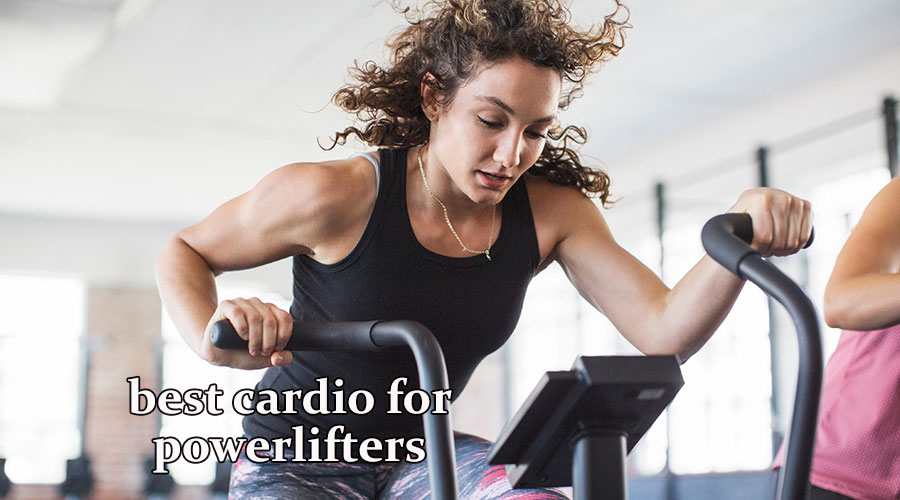
Powerlifting is a strength sport that requires athletes to lift heavy weights in the squat, bench press and deadlift. While powerlifters focus on training their strength muscles, they should also not forget about cardio. Cardio can help reduce fatigue and improve recovery between workouts. It can also improve overall muscle endurance and flexibility. There are many types of cardio that powerlifters can choose from to meet their fitness goals. Cardio is the key to success in any strength or power sport. It increases aerobic capacity, improves recovery, and reduces body fat levels – all extremely important components of physical performance. When it comes to cardio for powerlifters, there are many different types of cardio that can be beneficial depending on your goals and preferences. There are four main types of cardio that can be beneficial for powerlifters: high-intensity interval training (HIIT), low-intensity steady-state (LISS), plyometrics, and sprinting.
Type 1: High-Intensity Interval Training

Cardio is an important part of any workout routine, and there are many different types of cardio to choose from. High-Intensity Interval Training (HIIT) is one of the most popular forms of cardio today. This type of exercise consists of short bursts of intense activity with periods of rest in between. HIIT has been found to be a very effective way to burn fat and improve cardiovascular health. It can also be done in a relatively short amount of time, making it an attractive option for busy people who want to stay fit.
HIIT workouts require more effort than traditional steady-state exercises such as jogging or cycling, but they have greater long-term benefits in terms of fitness and weight loss. Studies have shown that HIIT can produce results equivalent to those achieved by longer-duration workouts in just 15 minutes or less!
Type 2: Low-Intensity Steady State (LISS)

Low-Intensity Steady State (LISS) is a type of cardio that requires little intensity but still yields beneficial results. LISS involves performing cardiovascular exercises at a low intensity for a prolonged period of time. It can involve walking, jogging, or swimming and it typically lasts from 30 minutes to an hour. The goal of LISS is to increase the body’s metabolism so that fat can be burned more efficiently even during rest periods. This type of cardio is best for those looking for weight loss without placing too much strain on their bodies.
LISS helps to improve lung capacity, boost circulation and strengthen the entire cardiovascular system while also causing fewer injuries than high-intensity cardio activities like running and HIIT training. LISS can be great for people new to working out or those recovering from an injury because it doesn’t put too much strain on the body. In addition to being easier on the joints and muscles, LISS also has other benefits specific to powerlifting. For example, it increases aerobic capacity and helps improve recovery time between sets by increasing blood circulation.
Type 3: Plyometrics

Powerlifters are athletes who focus on building strength and power to lift heavy weights. Plyometrics is a type of cardio that is highly beneficial for powerlifters in order to increase performance and help with injury prevention. Plyometrics involve the use of short bursts of speed, agility, and quickness which help build explosive power for the body. Through plyometric exercises, powerlifters can increase their overall strength and explosiveness by training muscles to contract quickly when performing dynamic movements such as jumping, hopping, skipping and bounding. The intensity during plyometric workouts should be kept high in order to maximize gains; however, it is important to keep rest periods between sets long enough to allow the body time to recover before beginning again.
Type 4: Sprinting
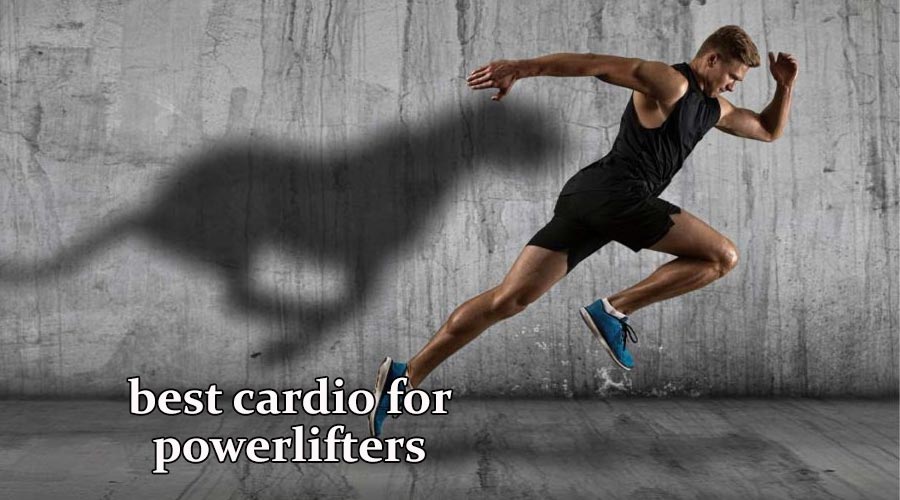
Sprinting is a powerful type of cardio for powerlifters. It provides explosive bursts of energy and helps build strength in the legs, both of which are important for heavy lifting. It also increases speed to get through sets more quickly, and it enhances agility to help powerlifters stay on their feet and move freely during lifts. Sprinting can increase overall work capacity by improving oxygen delivery to the muscles while helping with coordination and balance, both essential skills when moving heavy weights. Additionally, sprinting is an effective way to burn fat, which helps reduce body fat percentage and thus minimizes stress on tendons during lifts. In addition to its physical advantages, sprinting can also be beneficial for mental performance as well.
Low Impact Cardio Exercises: Minimize Injury Risk
Low-impact cardio exercises are an excellent way to improve cardiovascular health and minimize injury risk. These activities cause little to no stress and strain on the body while providing many beneficial physiological effects. Examples of low-impact cardio exercises include walking, swimming, jogging, stair climbing, cycling, and rowing. All of these movements provide a great cardiovascular workout without putting too much stress on the bones and joints of the body.
The benefits of low-impact cardio exercises go far beyond just minimizing injury risk; these activities can also help build endurance, strengthen muscles without adding bulk, reduce feelings of depression or anxiety, increase metabolism for weight loss management, and improve heart health by increasing oxygen flow in the blood. Low-impact cardio is a great choice for anyone looking to stay active without risking painful injuries or overworking their bodies.
Combination Training: Variety of Physical Demands
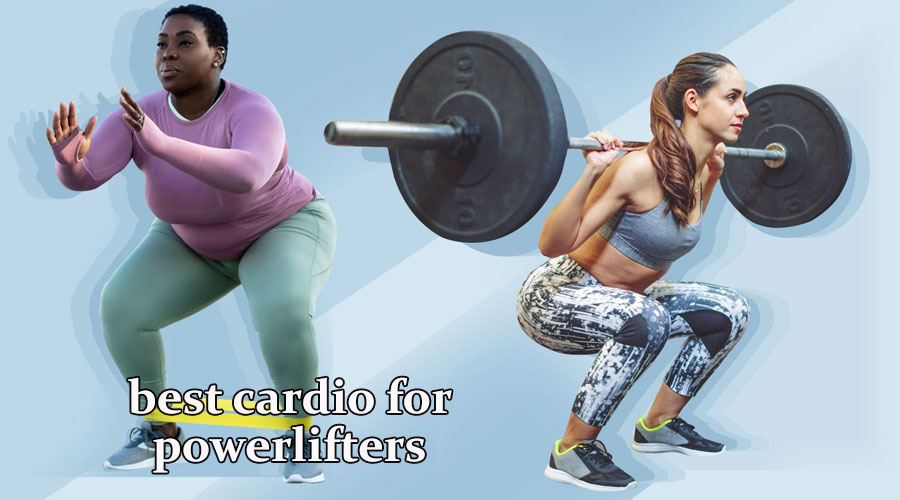
Combination training of cardio for powerlifters can be incredibly helpful in meeting a variety of physical demands. By incorporating cardiovascular exercise into the life of powerlifters, they can reduce their risk for heart disease and build muscular endurance. Cardio helps to increase blood flow to the muscles and promote recovery, which is vital for maintaining strength gains. Furthermore, it can help to improve overall body composition by reducing stored fat and increasing lean muscle mass.
In addition to its numerous health benefits, cardio can also help powerlifters maximize their performance in the gym. It increases aerobic capacity which allows them to recover faster between sets and perform better with higher-intensity workouts over longer periods of time. Moreover, combining cardio with strength training increases metabolic rate throughout the day so that one’s calorie-burning capabilities are increased even when not working out.
Safety Considerations in Doing Cardio for Powerlifters
Cardio is an integral part of any well-rounded fitness routine, but it can be especially important for powerlifters. Safety should always be of the utmost concern when engaging in any cardio exercise and there are some specific considerations that powerlifters must take into account in order to stay safe.
First, it is important to start slowly and build up gradually when beginning a new cardio activity or increasing the intensity or duration of the current activity. Powerlifters should take into account their body type and physical condition before performing high-intensity activities like sprinting or running long distances. This will ensure that they don’t overextend themselves which could lead to injury. Additionally, powerlifters should make sure to warm up properly before engaging in any cardio activity. This means warming up with dynamic stretches as opposed to static stretching, which could hinder performance during a workout.
Conclusion and Tips for Maximizing Results
Cardio for powerlifters presents an interesting challenge. On one hand, it is important to build a strong cardiovascular system in order to improve overall performance and decrease the risk of injury. On the other hand, too much cardio can interfere with powerlifting gains by overtraining or burning out the muscle. With this in mind, it is essential for powerlifters to be strategic about their cardio routine.
In conclusion, cardio should not be neglected if you are a powerlifter. It plays an important role in overall fitness and performance goals. However, it is essential to ensure that your approach is balanced within the context of your lifting program and recovery schedule.

